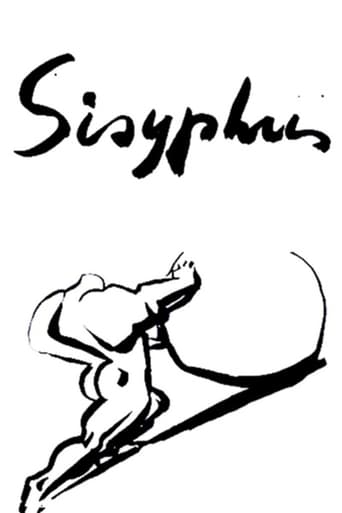Lee Eisenberg
We in the 21st century are used to seeing flashy animated features. Marcell Jankovics's "Sisyphus" is a welcome surprise. Lasting only two minutes, it features low-key animation to tell the story of a man who must perform the eternal task of pushing a boulder up a mountain. The Eastern Bloc produced a number of plain-looking cartoons that nonetheless managed to tell good stories. After all, good storytelling doesn't require a lot of resources, just talent. There was plenty of that going into them, and this unglamorous production from Hungary deserved its nomination for Best Animated Short Film at the Academy Awards that year. I recommend it.
kamerad
Marcel Janovics' "Sisyphus"(1974) is a brilliant film. This film is in black and white. literally. There are no grays, no shadings. Just bold black lines and empty white space. However, Janovics is still able to make us aware of the incredible strength of Sisyphus, and the tremendous weight of the rock. As the rock grows in size, and Sisyphus, despite his ample musculature, shrinks, we truly feel the frustration and pain of the title character. This pain is reflected in two ways. The first way is in the artwork. I already mentioned the bold lines, but it is the way in which they are used that is remarkable. Towards end of the film, Sisyphus, now almost a stick figure, gears up to take a final push at the rock. He pulls back, and for a split second, becomes nothing more than a squiggle of lines. It is as this squiggle that he finds his last ounce of strength. He comes rocketing back, once again his old muscular self for just a brief moment, and shoves the rock on to its final resting-place on the top of the mountain. Then as the mountain is revealed to be a pile of all the rocks Sisyphus has ever pushed to the top, we see him collapse, sinking into the side of the mountain, becoming a part of it. Then he picks himself up and slinks back down to the bottom. By having Sisyphus melt into the mountain, Janovics is able to show us the exhaustion and frustration of the title character.The pain is also reflected in the stunning sound track. I know this has nothing to do with the animation, but the use of sound is so powerful that I felt it had to at least be mentioned. Gasps and grunts. Not much at first, but as the boulder gets bigger, the gasps turn into screams. It's not just physical pain being reflected in the screams. There is an emotional pain as well. So what does this film mean? As with most Eastern European films at the time, it is obviously about political oppression. The futile efforts of trying to create personal works of art are reflected in Sisyphus's unending struggle, with a cold, oppressive force trying to prevent the hero from doing what he has to do.

